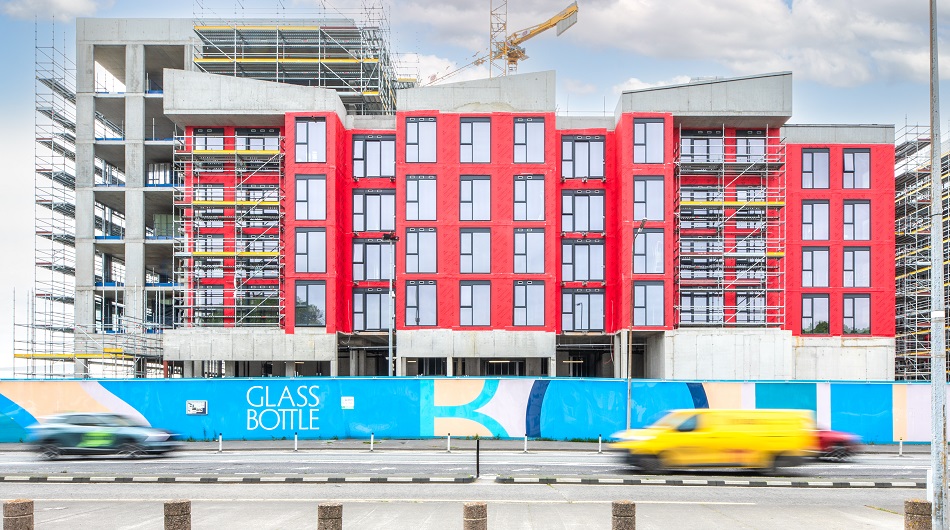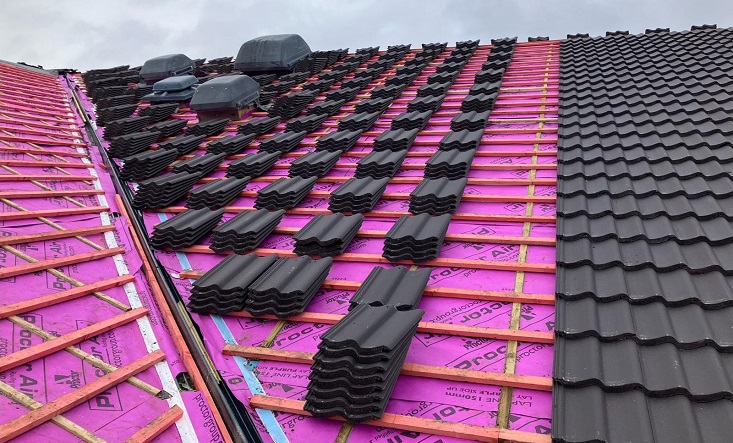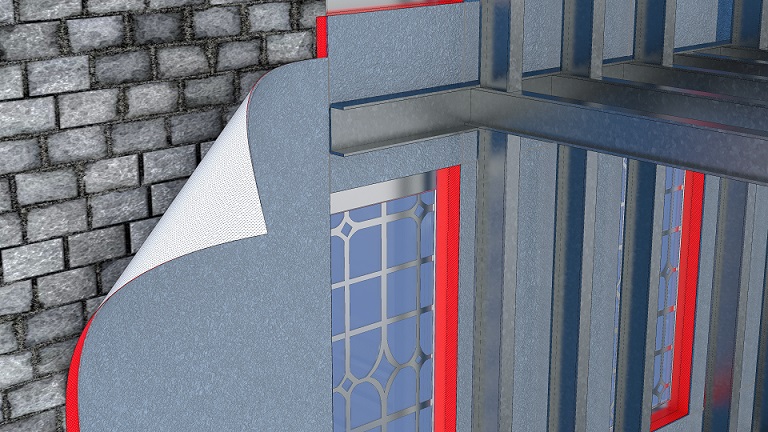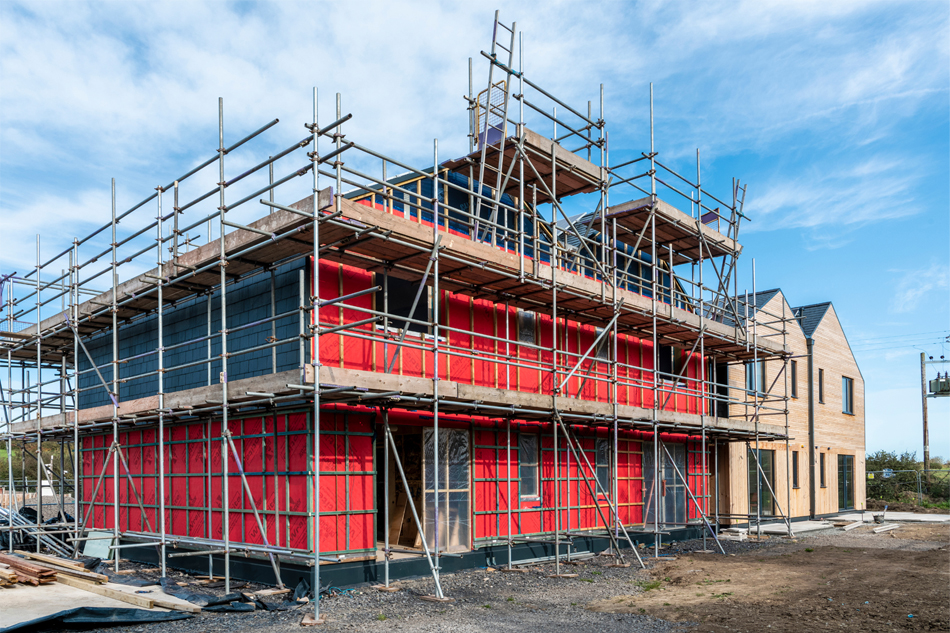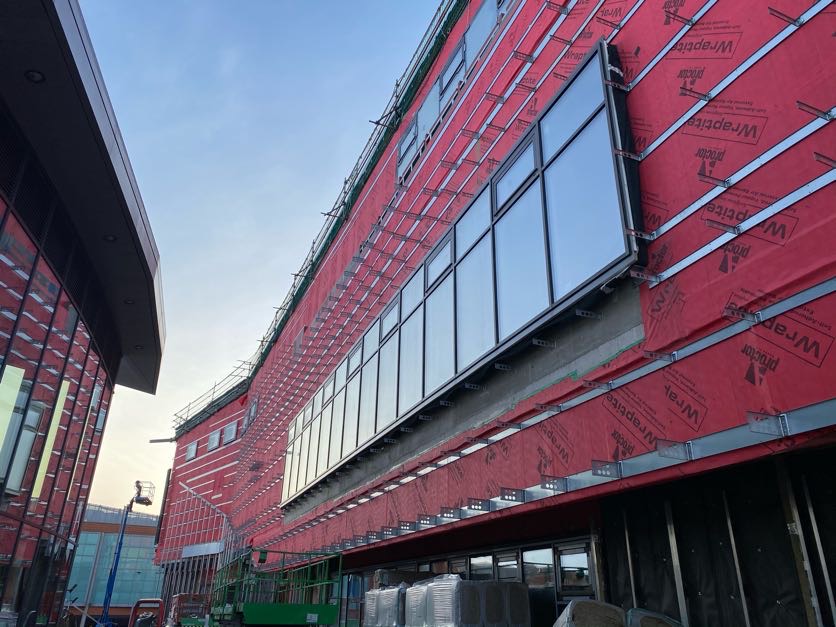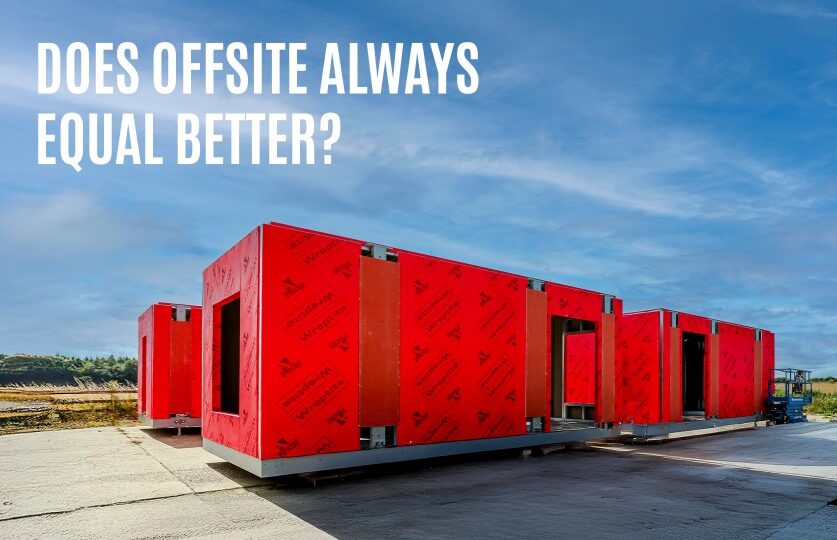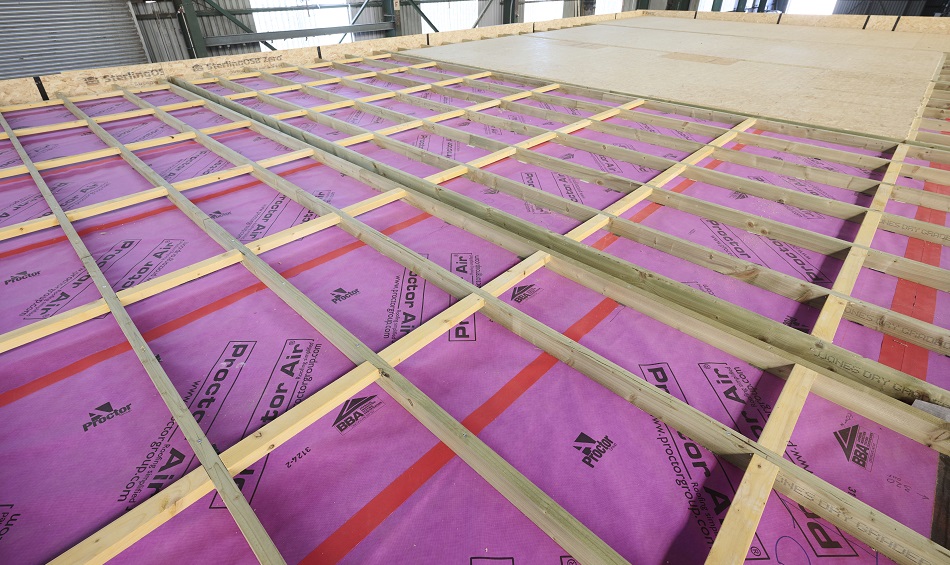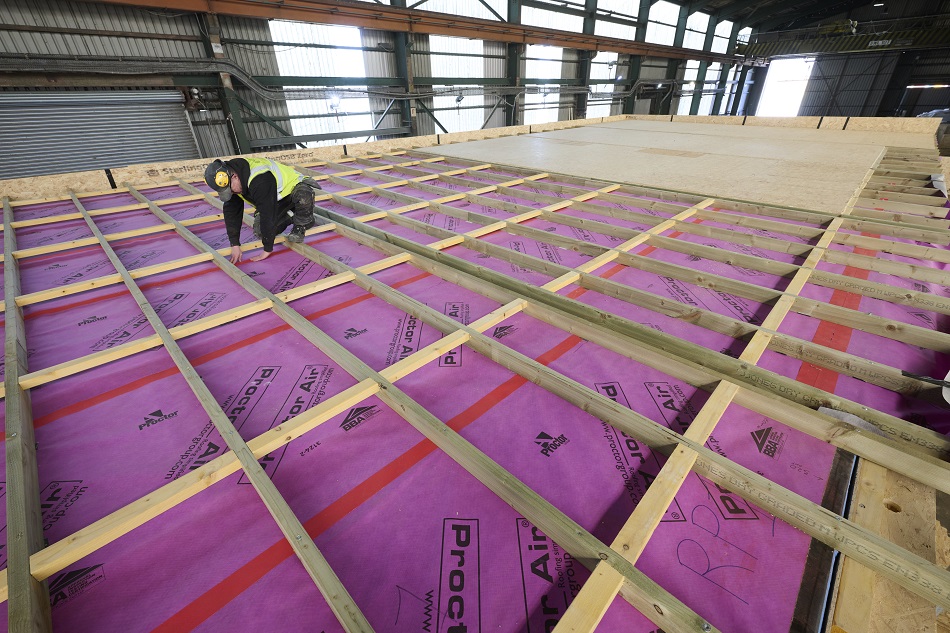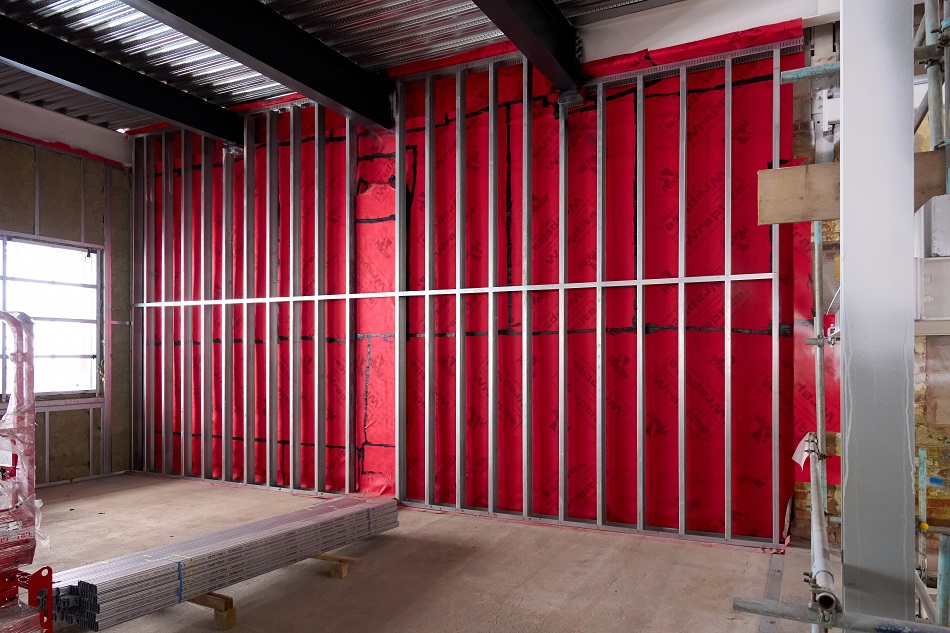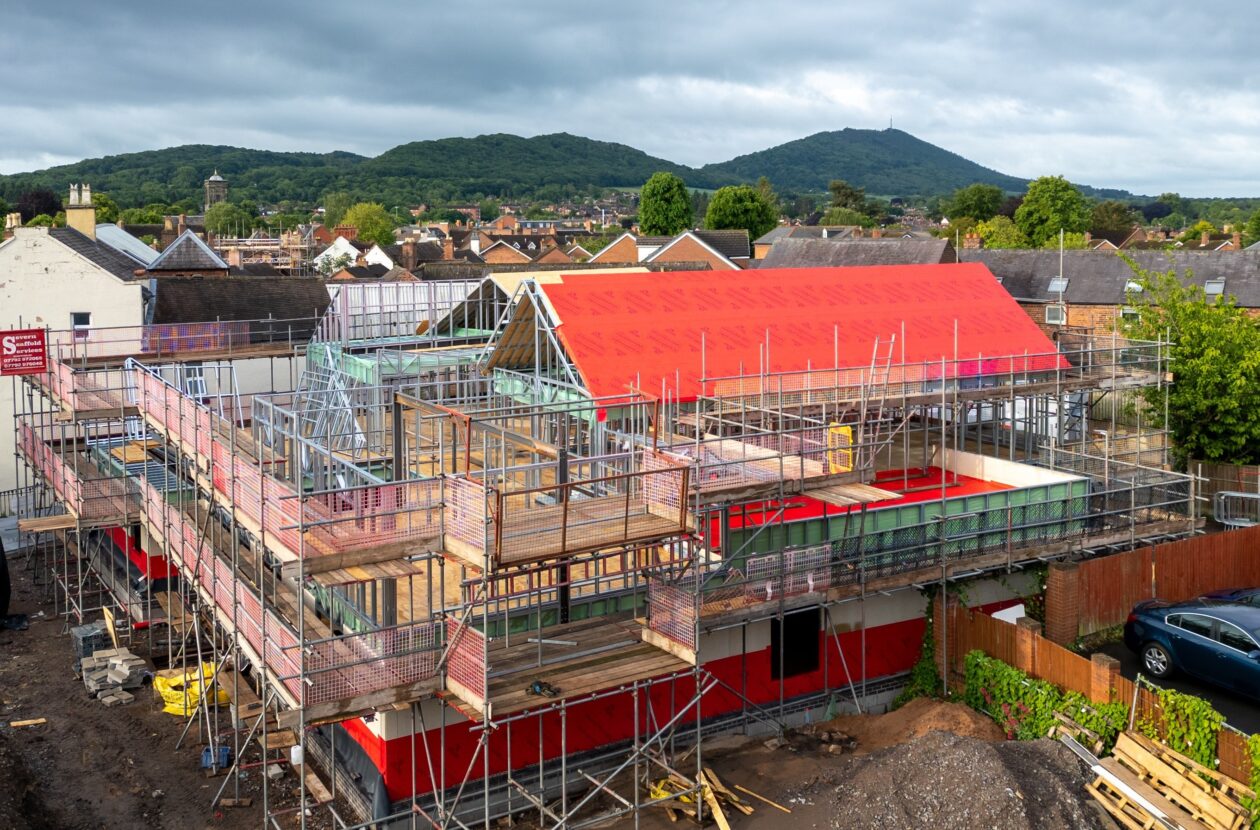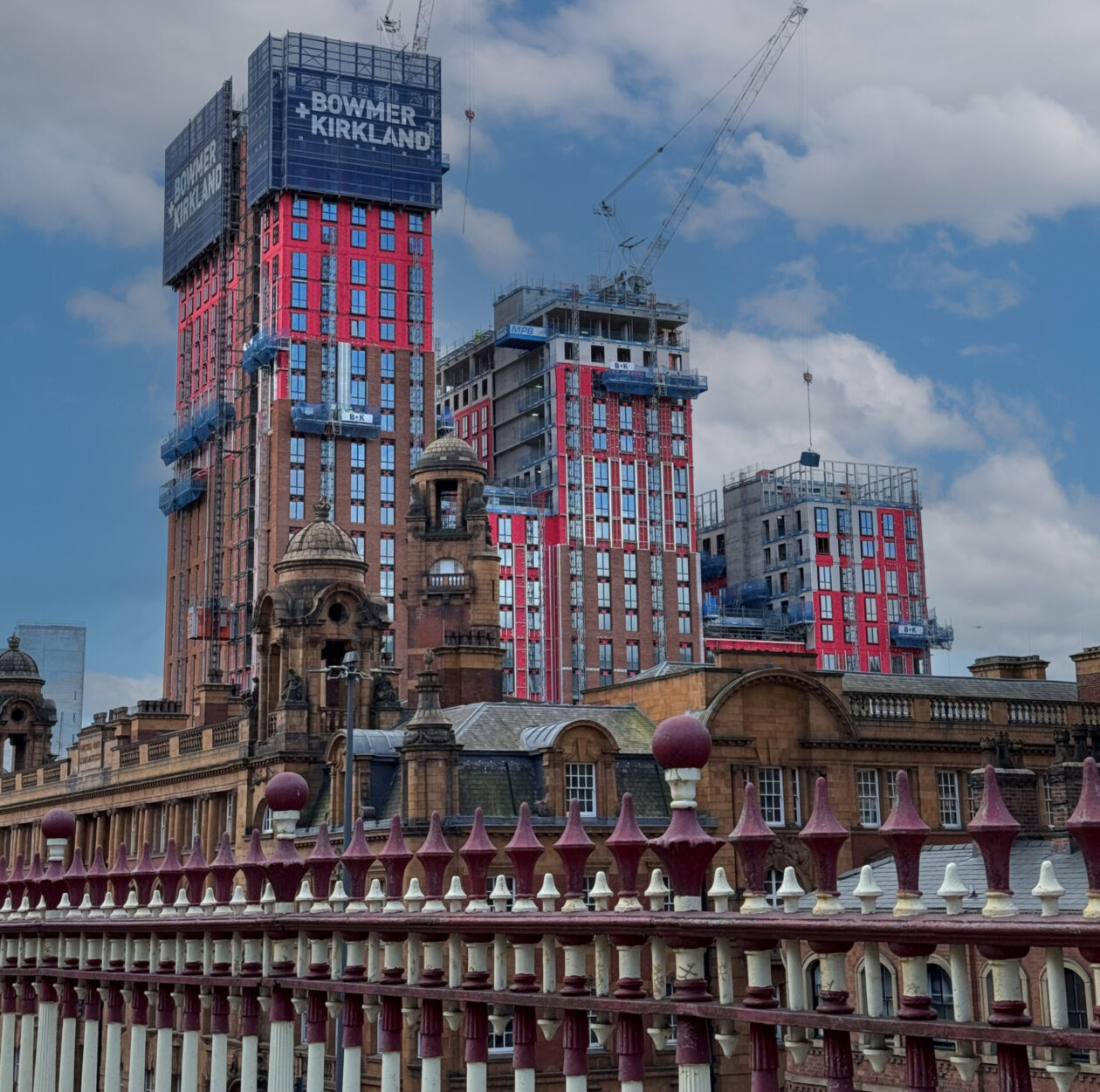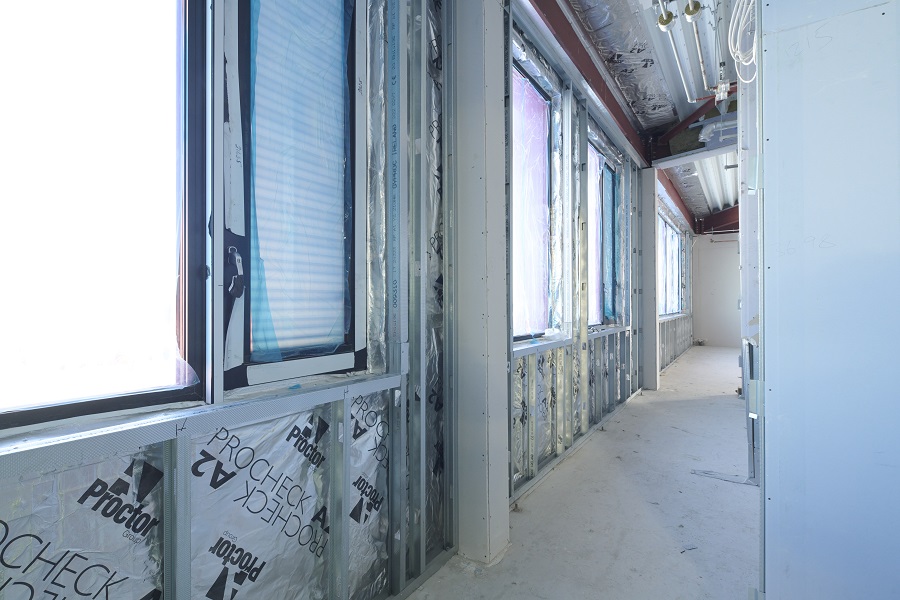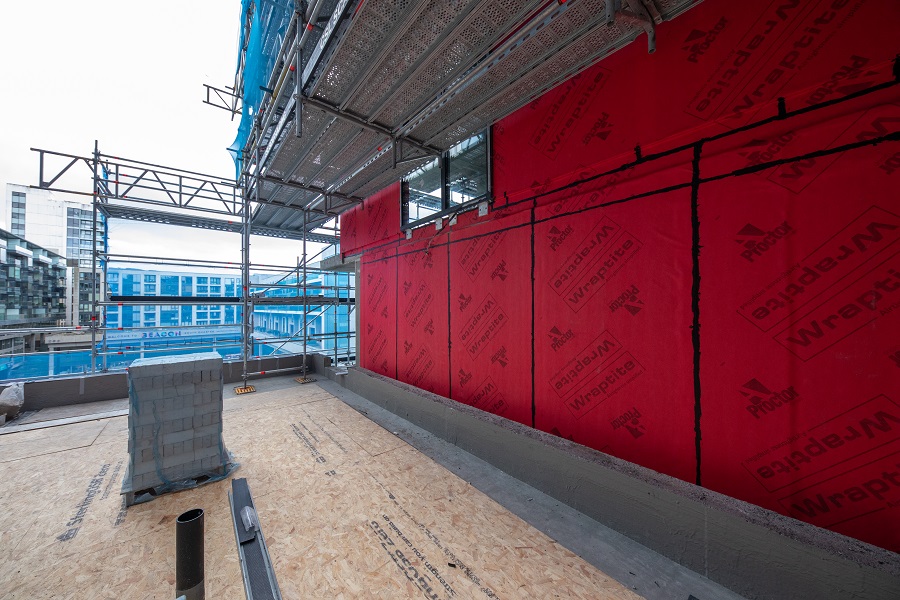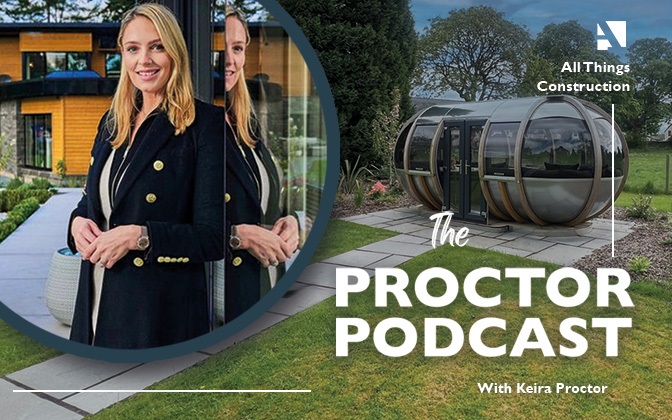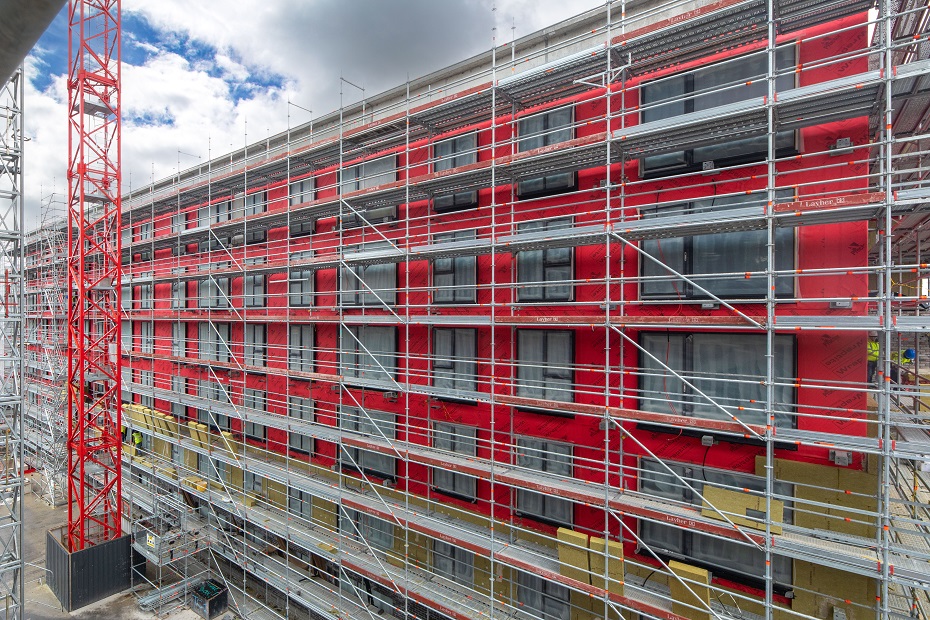What role does a vapour permeable membrane play in a facade?
It can be days or months before external cladding is installed on a facade, so vapour permeable membranes are crucial for protecting the structural frame from the weather during construction. With the cladding in place, the membrane then acts as a secondary defence to external moisture.
At the same time, and longer-term, membranes must also allow moisture vapour to pass from the building into the ventilated cavity behind the cladding. Allowing construction moisture in the frame to dry out, or releasing moisture vapour generated by building users, is important for buildings to avoid condensation risks and moisture damage, and to reach moisture equilibrium.
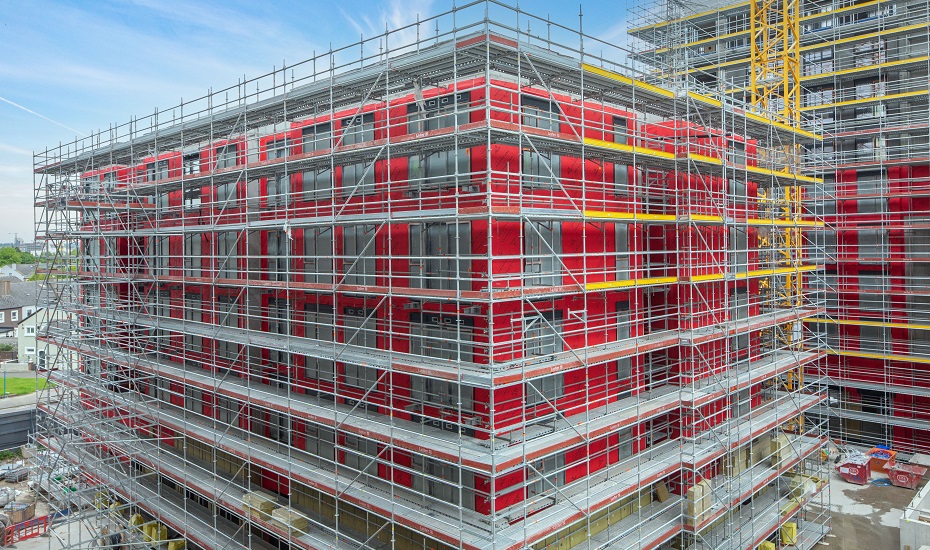
How is the performance of vapour permeable membranes defined?
BS 5250:2021 Management of moisture in buildings. Code of practice defines a vapour permeable membrane for walls as having a water vapour resistance (sd) of less than 0.12m but greater than 0.05m (or 0.6 to 0.25 MNs/g).
Such membranes may also be termed ‘breather membranes’, but they are distinct from the low resistance (LR) membranes used in pitched roofs.
For use behind open-jointed cladding, BS 5250 says that if a membrane’s sd value is greater than 0.12m then a condensation risk analysis should be carried out, but stipulates the permeability must not exceed and sd of 0.25m.
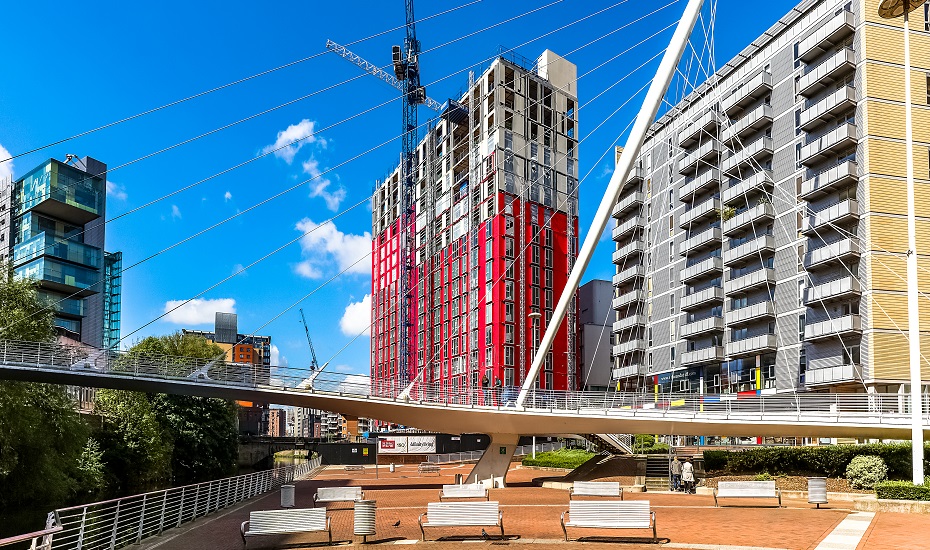
What is the benefit of specifying a vapour permeable membrane for airtightness as well?
Good airtightness keeps warm air inside buildings and cold air out, reducing demand on heating systems. Detailed design has to consider where a building’s airtightness line is located and how it will be kept continuous. Continuity must be practical to achieve on site.
A standard approach is to position the airtightness line on the internal side of the building structure. This puts the airtightness line in conflict with the services zone, usually resulting in multiple penetrations that all need to be fully sealed.
An alternative – and better – approach is to shift the airtightness line to the external face of the building structure. This makes it easier to achieve the required continuity, and significantly reduces the problem of services penetrations.
Using a vapour permeable membrane for both airtightness and weather protection provides a complete, holistic envelope. It maintains weather protection during construction, and subsequently delivers airtightness. On high rise buildings, it guards against pressure differences created by high winds.
What are the advantages of using a self-adhered membrane?
The self-adhesive nature of a product like A. Proctor Group’s Wraptite® means the membrane is easy to apply, and provides a consistent seal with no requirement for mechanical fixings. The membrane effectively wraps the building, providing a reliable visual indicator for continuity in installation.
We are starting to see some ‘self-adhesive, vapour permeable’ alternatives coming into the marketplace, but not all are equal to Wraptite®. In fact, some products marketed as vapour permeable membranes do not meet the definition for walls given in BS 5250.
How does the adhesive contribute to the performance of a self-adhered membrane?
One significant differentiator between self-adhered membrane solutions is the type of adhesive used. A vapour and air-permeable adhesive is particularly advantageous.
If moisture vapour can pass through the adhesive by both diffusion and air movement, then it reaches the membrane itself quicker. It then passes through the airtight-but-vapour-permeable layer, helping to quickly dry out the building and reach/maintain moisture equilibrium.
Is it better to pre-apply a vapour permeable membrane to sheathing board before installation?
Whilst using pre-applied vapour-permeable membranes on sheathing boards is a viable option, our experience indicates that it offers no significant advantages over traditional on-site application methods. The pre-applied approach requires additional handling steps during manufacturing, transportation and installation such as taping the board joints once installed. One of the main drawbacks is the difficulty of achieving a robust seal around mechanical fixings. Since the membrane is already bonded to the cement board, any fasteners used to attach the panels must penetrate the membrane, creating potential points of air and moisture leakage. Sealing these penetrations typically requires additional tapes or patches, which adds labour, cost, and the risk of installation errors. This contrasts with on-site membrane application, where penetrations can be more easily planned, minimised, and sealed in a controlled sequence.
Ultimately, Wraptite delivers the best results as an external air barrier when the number of membrane penetrations is kept to a minimum. The more penetrations introduced—such as those required by fasteners in a pre-applied system, the greater the risk of compromising the air and moisture tightness of the building envelope. In this context, traditional on-site installation offers a more adaptable, reliable, and durable solution.
Are there any other differences to be aware of between membranes?
These FAQs have focused on moisture management, but fire safety is also a relevant concern. There are examples of products being marketed with certain levels of fire performance, without test data to back up the claims.
Others, meanwhile, don’t have a sufficient reaction to fire classification or fire resistance testing, which a manufacturer may not make clear.
Another area to look at is third-party certification, and the range of assessment carried out on a product by different independent bodies. Some products have no third-party certification at all, while a product like Wraptite® has a full suite of assessment.
What are the risks if a membrane does not allow the passage of moisture?
Moisture build-up or increased risk of condensation behind a membrane can mean structural frames don’t dry out quickly, building fabric components become exposed to moisture when they shouldn’t be, and indoor air quality suffers due to higher humidity levels.
The golden thread of information is mainly associated with fire safety. In buildings where a golden thread is required, all decisions around design, specification and installation are recorded with the aim of providing some quality assurance.
Examples of potential moisture-related issues could be a cladding panel falling off due to a rusted fixing, or occupants becoming unwell due to poor indoor air quality. The golden thread could be used to trace back specification decisions compared to the original performance requirements, to establish potential liability.
Are poorer performing products genuinely cheaper?
Despite broadly positive changes in culture, the construction industry remains open to poorly-performing products being available – and, usually if the cost is favourable, being installed.
On a square metre basis, one product may appear cheaper than another. If, though, products are offered on smaller roll sizes, require bigger overlaps, need additional accessories, or take longer to install, then any upfront cost savings are quickly negated.
What questions can – and should – specifiers ask when comparing self-adhered membranes?
In the face of aggressive marketing or cost-saving quotes, getting the information needed to make informed decisions can be daunting.
Our advice is: don’t be afraid to question products, because manufacturers should have nothing to hide. In particular, you can ask the following:
- Does the substrate require a primer before the membrane is applied?
- Are any other components or accessories required for installation?
- Does the membrane meet your project’s fire performance requirements?
- Does the membrane contribute to your project’s moisture and vapour management requirements?
- What test data and third-party certification is available, and does it relate to the specified substrate?
- Can they provide a cost of fire claims?
For more information, visit https://proctorgroup.com/products/wraptite
Request a Sample
Technical Advice
CAD Detail Review
U-Value Calculation
Book a CPD
Specification Check
